What Does Turmeric Taste Like?
When you buy through our links, The Breslin may earn an affiliate commission. Learn more
Many people often ask, “What does turmeric taste like?”. How about you? Are you curious about this? If so, you are in luck because reading this article will boost your knowledge. All your curiosity will be solved soon.
You need to know exactly what turmeric tastes like because it is a commonly used ingredient in cooking. This will help you get the right combination of ingredients. Not only about the taste, but the post will provide you with a lot of other helpful information.
Therefore, in order not to miss any interesting knowledge, you should read the article carefully. Trust me!
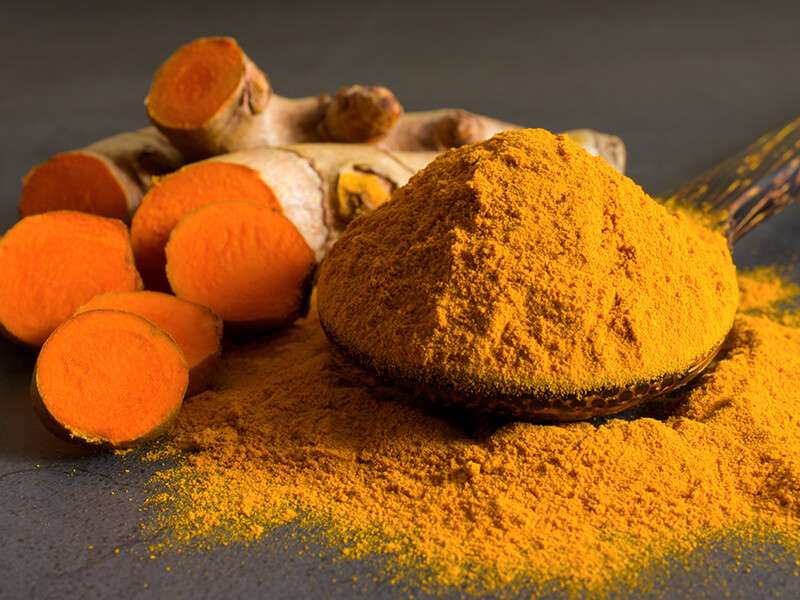
Does Turmeric Taste Good?
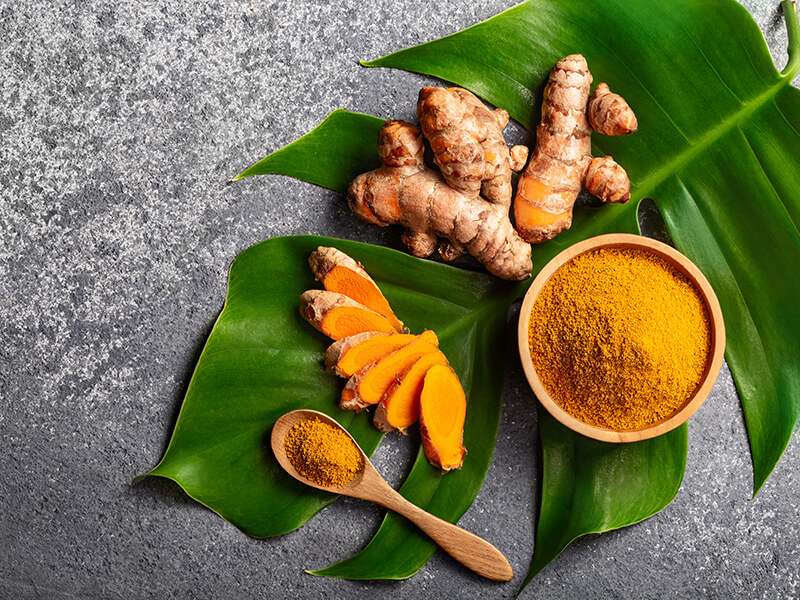
Turmeric is a widely used ingredient in cuisine to bring new flavors and colors to dishes. Turmeric is usually in fresh form and powder form. But turmeric powder is easier to find in the supermarket.
If you want to purchase raw turmeric, you should go to the Asian stores. Fresh turmeric and turmeric powder have different textures. Here is a table of summarized information about texture and flavor of fresh and powdered turmeric.
Fresh turmeric root has a similar texture to ginger, it is covered by a knobby skin. Turmeric powder has the same texture with ground sage.
Fresh turmeric is usually pale yellow and has a slightly bitter taste. The turmeric’ flesh has an orange color. When you taste turmeric, you might think of the taste of citrus. Therefore, to balance the taste, you should combine turmeric with the intense flavor ingredients.
Moreover, fresh turmeric contains a lot of water, so its flavor is not stronger than turmeric powder. Turmeric powder has a spicy taste like ginger, but it is not spicier than ginger. Its bitterness is pretty strong along with a little mustard taste.
Compared with turmeric root, the bitter taste of turmeric powder is much stronger. Therefore, you should combine turmeric powder with other potent ingredients to reduce the bitterness of turmeric and help the overall taste of the dish be balanced.
In addition, turmeric also has a slightly earthy sweetness, spicy, and woody. If you want to use fresh turmeric as a substitute for turmeric powder in your dish, you should use 4 times the amount of turmeric root as the recipe calls for.
Moreover, you should not consume uncooked turmeric because of its sour and pungent flavor. It is better to combine turmeric with cooked dishes or pickle turmeric since its taste is amazing.
Let’s taste turmeric powder to have a real feeling about the wonderful spice.
Discover Some Fantastic Information About Turmeric
To help you understand this spice better, you and I will start with some background information about turmeric. You will know more about colors as well as learn which family turmeric belongs to and other useful knowledge.
Turmeric is a popular spice used in many Asian cuisines, such as India, China, Thailand, Japan, Vietnam, etc. Turmeric belongs to the ginger family, so turmeric has a similar texture to ginger. Turmeric is developed from turmeric’s root.
Turmeric has a light yellow or orange-brown color that is quite eye-catching, so it will make the dish more colorful. Besides using fresh turmeric, you can also grind it to make turmeric powder for other uses.
Nutritional Contents And Health Benefits Of Turmeric
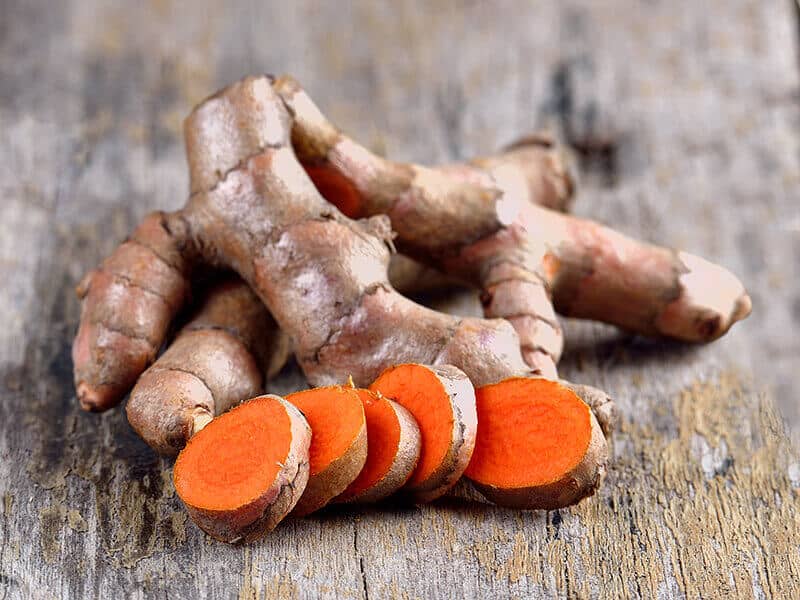
The nutritional composition and health benefits of turmeric that I am about to provide will boost your knowledge significantly. If you do not want to miss anything, keep an eye on it.
What Are Nutrients In 1 Teaspoon Turmeric Powder?
Turmeric is an ingredient that contains many nutrients that are good for your health. The use of turmeric will help your body replenish calories, protein, fat, carbs, fiber, and sugar. These are essential substances for your daily life.
According to the USDA, 1 teaspoon of turmeric powder will provide you with about 26 percent of the manganese your body needs for a day, 16 percent of iron, and 5 percent of potassium.
The table below will show you a quick view of the nutritional compositions of 1 tablespoon turmeric powder.
| Nutrients of turmeric | Level |
| Calories | 29 |
| Protein | 0.91 grams |
| Fat | 0.31 grams |
| Carbs | 6.31 grams |
| Fiber | 2.1 grams |
| Sugar | 0.3 grams |
Some Fantastic Positive Health Benefits Will Satisfy You
Thanks to its nutritional components, turmeric will be a perfect ingredient for your health. Let’s explore the benefits that turmeric will bring to your health.
1. Turmeric Will Help Fight Inflammation
Fresh turmeric is a commonly used ingredient for open wounds or acne because its anti-inflammatory properties help prevent inflammation and bacterial growth. Daily use of turmeric will help reduce inflammation.
2. Turmeric Is An Effective Pain Reliever
Besides supporting anti-inflammatory, turmeric is also a natural pain reliever for your body. Especially for people with arthritis, the use of turmeric will help reduce the most painful condition caused by arthritis.
3. Enhance The Function Of Your Liver With Turmeric
Your liver will be better protected with turmeric, thanks to its antioxidant properties. The antioxidant helps the liver prevent the effects of toxins and protect your liver. So, you should use turmeric if you take medicine for a long time.
4. Turmeric Will Help Increase Digestion
Besides helping to add flavor to food, turmeric also helps you digest better. Today, with the development of medicine, turmeric is widely used in medicines to help treat inflammatory bowel diseases (1).
5. Preventing The Risk Of Cancer
If you are worried about your risk of cancer, turmeric will help you reduce your chances of getting cancers, such as pancreatic cancer and prostate cancer. Therefore, let’s add turmeric to the dishes to help protect your health (2).
Listen to some fantastic health benefits of turmeric. You will gain a lot of new and amazing knowledge.
How To Cook With Turmeric To Get The High Result?
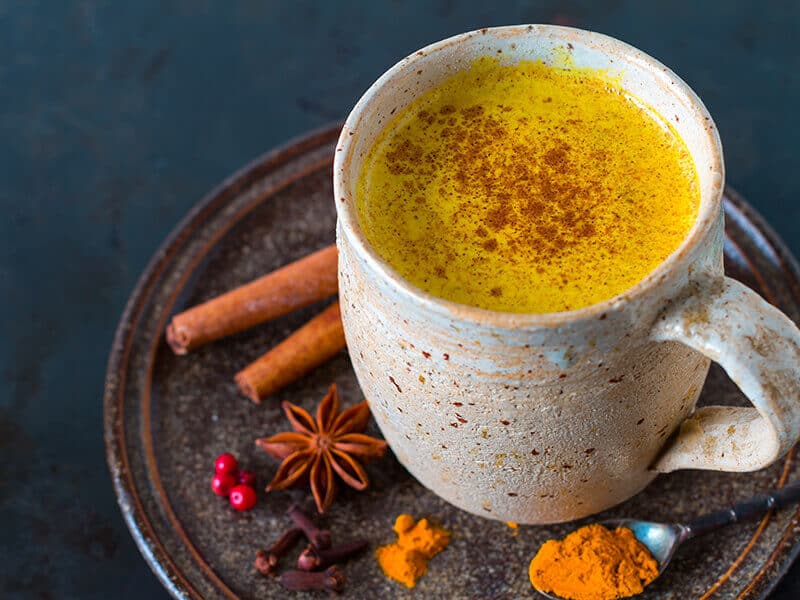
There are many ways to use turmeric to create delicious culinary recipes. The combination of turmeric will help increase the flavor as well as add color to your dishes. This section will provide you with effective ways to use turmeric.
Turmeric Culinary Use That You Might Not Know
Because of its characteristic features, turmeric is used in many ways to make fantastic dishes in cuisine. You can combine it in smoothies, coffee, or tea. Furthermore, the combination of turmeric and other ingredients in curry is an amazing idea.
- What Does Turmeric Taste Like In Smoothies?
To increase the taste of your smoothies, you should add a bit of turmeric into your juices or smoothies. The yellow color of turmeric will create an eye-catching color for smoothies. Turmeric will add a little bitterness to diversify the taste of smoothies.
- Use Turmeric To Enhance The Flavor Of Coffee
Have you ever combined turmeric with coffee? If not, you should try adding a few slices of fresh turmeric to your coffee to create a strange flavor for the coffee. Turmeric will bring a little warmth as well as add color to the coffee.
- What Do You Think About Adding Turmeric In Tea?
The combination of turmeric with tea will bring a very strange feeling. Adding turmeric to tea will reduce the sweetness of the tea and give it a little earthy taste. When enjoying turmeric tea, you can feel a little taste of lemonade or orange juice.
- Creating Colorful Pumpkin Pie With Turmeric
The pumpkin pies will become more special and colorful when you combine them with turmeric. Use 1 to 2 tablespoons of turmeric or turmeric roots for an earthy and robust flavor to the pumpkin pie.
- Making Amazing Curries By Adding Turmeric
Turmeric is a good ingredient to pair with carries, but you should not use it too much to ensure the flavors are balanced. Your curry will turn bitter if you add too much turmeric. However, turmeric will bring a beautiful yellow color to curries.
- The Combination Of Turmeric And Tofu Is Perfect
The scrambled tofu becomes even more amazing in taste and color when turmeric is added. You should give it a try because the results will not let you down. Turmeric will add new flavor to the mildly flavored tofu.
- Salads Will Become Better With Turmeric Dressing
Not adding turmeric to salad dressings is a big mistake. Turmeric will help increase the flavor of vegetable salads. You should combine turmeric with orange juice to make salad dressing. The sweetness of orange juice will balance the bitterness of turmeric.
Some Incredible Recipes To Take Advantage Of Turmeric
If you want to know how amazing turmeric is, you can try some recipes below this weekend. You can add them into your savory dishes or drinks. And I guarantee you will love these treats.
1. Pineapple Turmeric Smoothie
The turmeric smoothie combined with pineapple is a perfect choice for hot summer days. Smoothies with the appearance of turmeric will help you reduce inflammation. Its taste is also amazing, and it will make you feel relaxed and comfortable when enjoying it.
2. Turmeric Latte
Let’s make delicious turmeric latte together to treat your family. This is a pretty simple dish to make with turmeric. Turmeric latte brings out the characteristic flavor and yellow color of turmeric, you will feel the aroma and taste of cinnamon and milk.
3. Turmeric Ginger Tea
A cup of hot turmeric ginger tea will help you feel warmer on cold days. The aroma and warm taste of ginger and turmeric will soothe your throat. Add a little lemon to enhance the flavor of the tea. A bit of cinnamon will make the tea more fragrant and attractive.
4. Coconut Curry Turmeric Chicken
Turmeric is a suitable ingredient to add to chicken curry. It creates an eye-catching golden color for the dish and helps the curry become richer. Coconut milk creates natural fat for the dish. The chicken is soft, chewy, and absorbs the spices evenly.
Wonderful Methods To Store Turmeric
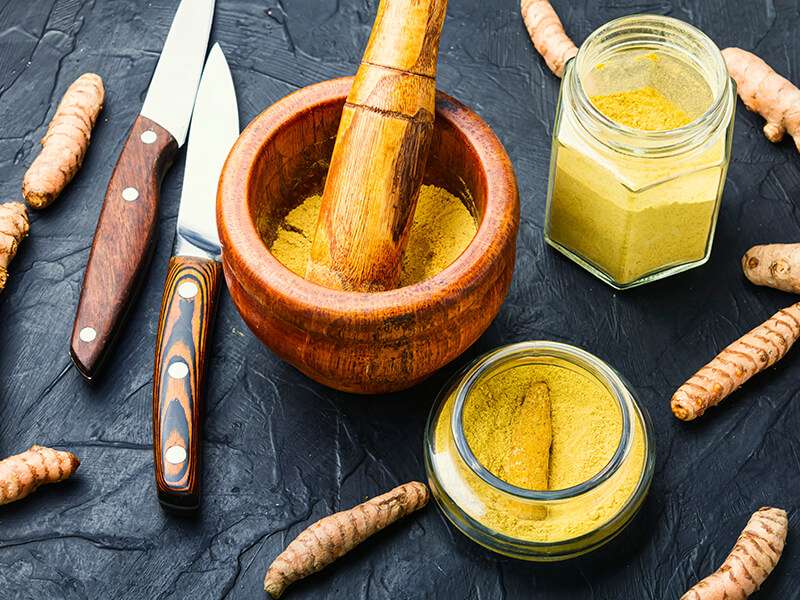
Storing turmeric is extremely essential to keep it fresher and extend its shelf life. I will provide you with the most effective ways to preserve fresh turmeric. Keep reading to get more fantastic knowledge.
Preserving Turmeric At Room Temperature By Dehydration Method
Another effective method to preserve turmeric root is dehydration. This is a simple and highly effective way. I will give you specific instructions for the best results.
- Step 1: Remove dirt and contaminants by rinsing with water and scrubbing with a brush.
- Step 2: Peel the thin skin of turmeric. To make it easier, you should use a vegetable peeler for better results.
- Step 3: Cut turmeric into thin slices; this will make dehydration easier and faster.
- Step 4: Place the turmeric slices on the dehydrator’s drying tray. You should put a moderate amount and make sure the distance between them does not overlap.
- Step 5: Set the temperature to 105 degrees F to dry the turmeric slices. This drying takes about 4 hours to achieve the best effect.
- Step 6: Grind dried slices of turmeric by a spice grinder to form turmeric powder. Put the whole turmeric powder in a sealed jar to preserve.
Store Fresh Turmeric Root In Your Refrigerator To Keep It Longer
For me, the refrigerator is always the best device to preserve food. Refrigeration will keep turmeric roots fresh longer. The steps below will be extremely helpful to you, so please follow them carefully to succeed in storing turmeric.
- Step 1: The turmeric root after being purchased from the supermarket should be washed with water to remove contaminants and dirt. You can use a brush to do that.
- Step 2: Dry the turmeric root with a paper towel to prevent mold growth.
- Step 3: Cover turmeric with a layer of dry paper towels to control moisture and reduce mold and bacteria attacks.
- Step 4: Wrap another layer of paper towels to protect the turmeric better, and put the turmeric in an airtight bag.
- Step 5: Close the bag tightly, and place the bag in the refrigerator for storage.
Can You Freeze Turmeric?
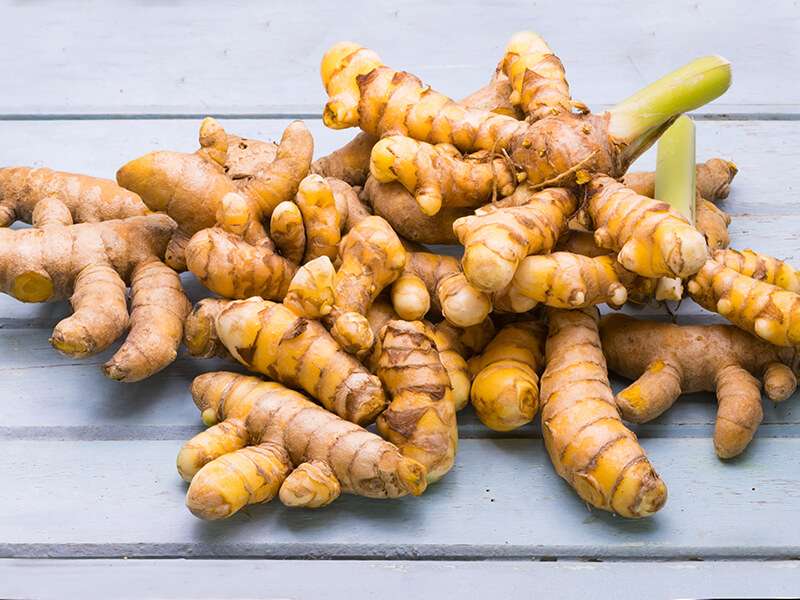
Freezing turmeric is a fantastic method to keep your turmeric for a long time. You can freeze fresh turmeric root as well as turmeric paste effectively.
1. For Fresh Turmeric Root
Just like other ingredients, you can completely freeze fresh turmeric to keep them fresh for a long time. Let’s learn the simple steps to do just that. I hope these instructions will help you more in your life.
- Step 1: To remove the dirt and contaminants after buying turmeric from the supermarket, you should wash the turmeric root in the water and scrub with a brush.
- Step 2: To keep away from mold growth, drying with a paper towel is really essential.
- Step 3: If you want to freeze turmeric roots better, cut them into small pieces.
- Step 4: Put all the turmeric pieces in a freezer bag that sucks the air out.
- Step 5: Close the freezer bag tightly and place it in the freezer for storage.
2. Storing Turmeric Paste In The Freezer
Pureeing turmeric is also a way to preserve them longer. The operation to preserve turmeric by this method is quite simple. You just need to focus and follow the steps below to store turmeric correctly.
- Step 1: Rinse the turmeric with water to discard dirt and contaminants.
- Step 2: Dry the turmeric with a paper towel.
- Step 3: Put all the turmeric into a blender.
- Step 4: Blend the turmeric into a smooth mixture.
- Step 5: Pour the turmeric mixture into a container.
- Step 6: Close the container tightly by the lid.
- Step 7: Place the container in the freezer to preserve turmeric.
Let’s learn how to preserve turmeric effectively to keep it fresher and longer.
Let’s Find Out The Shelf Life Of Turmeric
The shelf life of turmeric depends on how you store it. If you store it properly, turmeric can last longer. The shelf life of fresh turmeric root when stored in the refrigerator and freezer is about 2 to 3 weeks and up to 6 months, and fresh turmeric can last about 7 to 14 days.
Compared to fresh turmeric root, turmeric powder will have a longer shelf life. At room temperature in dry conditions and unaffected by direct sunlight, turmeric powder can be kept for 3 to 4 years. If stored in the fridge, it will last for more than 4 years.
Look at the table below to have a quick view of the shelf life of turmeric. I hope you will gain more helpful knowledge from it.
Some Amazing Tricks To Know If Turmeric Has Gone Bad
It is very important to determine the quality of your turmeric because this will help you to know if your turmeric has spoiled or not. Distinguishing the current condition of fresh turmeric and turmeric powder is completely different.
1. Some Signs That You Can Notice When Turmeric Powder Has Gone Bad
It is not easy to determine the condition of turmeric powder with the naked eye. Taste and smell are the most effective way to check if your turmeric powder has gone bad. Of course, it is extremely simple for you to do it.
When tasting and smelling turmeric, if you discover turmeric powder has a lighter smell than the original as well as the taste is no longer as strong as before. It is time to throw away your turmeric powder.
2. You Should Get Rid Of Your Fresh Turmeric When Seeing These Expressions
Testing the quality of fresh turmeric is simpler than turmeric powder. Fresh turmeric will spoil when you find it starting to turn darker, and the outer skin becomes dry and wrinkled. A few spots of mold also signal you should throw your turmeric away.
Use a scale to check if your turmeric is still usable. If the current weight of your turmeric is much lighter than the original weight, they are spoiled. Turmeric has dried up and can no longer hold moisture.
Best Tips For Selecting Turmeric At The Supermarket
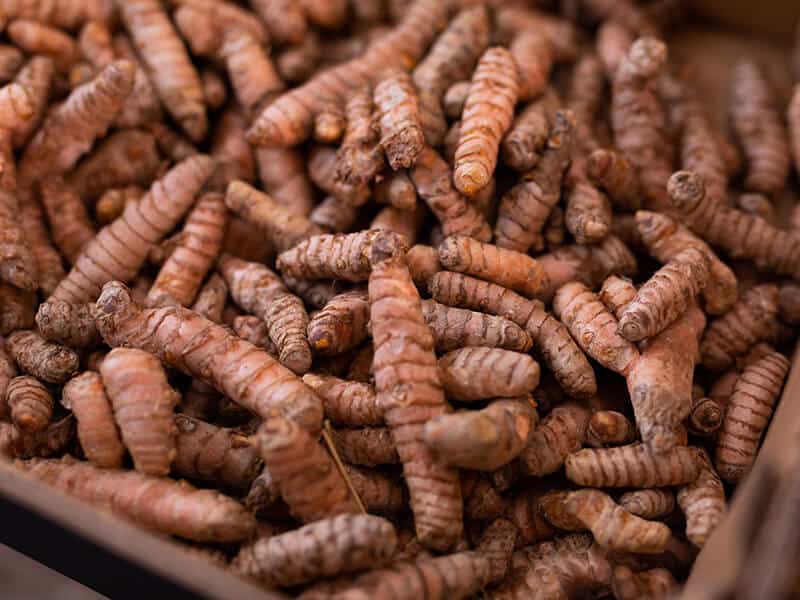
Choosing turmeric is extremely important, as this will help you preserve it longer and buy good quality turmeric. I will give you some fantastic tips for selecting turmeric at the stores.
Fantastic Tips For Choosing Ground Turmeric
Ground turmeric is common in stores because it is convenient to use and has a longer shelf life. To choose good ground turmeric, you should pay attention to its color. It is good to buy ground turmeric with a yellow-orange color and not buy dark brown ground turmeric.
You should smell turmeric powder before buying to check its quality. A strong smell indicates the good quality of your turmeric, and conversely, if you find its smell mild, you should leave it and choose another jar of ground turmeric.
How To Purchase High-Quality Fresh Turmeric Root?
To buy the freshest turmeric root, you should check the delivery date by asking the salesperson. Choose fresh turmeric that is bright yellow and has glossy skin. Do not buy turmeric root that is dark in color and has wrinkled and dry skin.
Absolutely stay away from fresh turmeric roots where you find white spots due to mold or peeling skin turmeric. Buying these turmerics will make you waste money in vain.
FAQs
Although I have provided you with the most useful information about the taste of turmeric and other things, there are still many related questions on this topic. I will help you answer these questions to expand your knowledge.
Share Your Opinions About The Turmeric Taste
Today, turmeric has become a popular spice in cuisine. The dishes will become more delicious and colorful with turmeric. The information about the taste of turmeric provided by me will help you get more perfect spice combinations.
Do you like the taste of turmeric? I love its earthy taste as well as the slight warmth it gives a cup of tea or the beautiful color that goes with curries. I hope you enjoy it and make it an indispensable ingredient in cooking.
If you gain more helpful knowledge from the article, please like and share the fantastic information to other people. Do not hesitate to speak up your other fantastic ideas about this topic in the comments. Thanks a lot!
References
- Bundy R, Walker AF, Middleton RW, Booth J. Turmeric extract may improve irritable bowel syndrome symptomology in otherwise healthy adults: a pilot study. J Altern Complement Med. 2004 Dec;10(6):1015-8. doi: 10.1089/acm.2004.10.1015. PMID: 15673996.
- Zoi, Vasiliki, Vasiliki Galani, Georgios D. Lianos, Spyridon Voulgaris, Athanasios P. Kyritsis, and George A. Alexiou. “The Role of Curcumin in Cancer Treatment” Biomedicines 9, no. 9: 1086. https://doi.org/10.3390/biomedicines9091086.

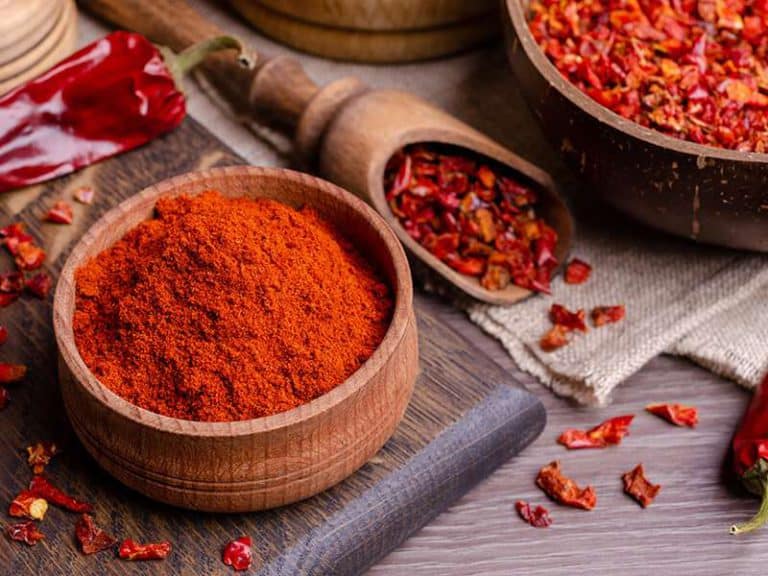
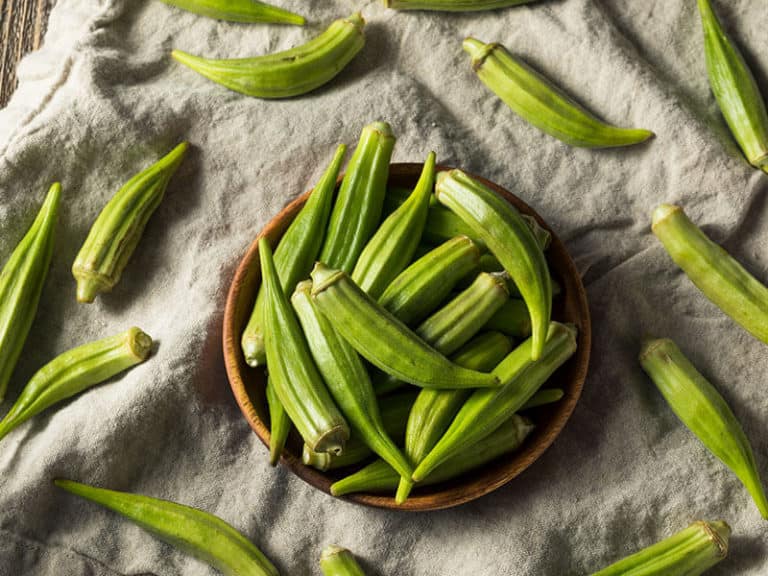



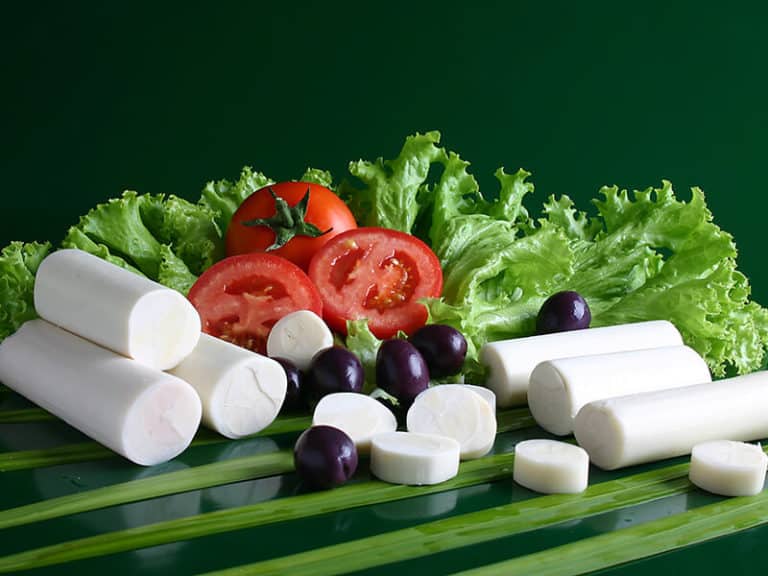
Amanda Collins
Founder and Senior Culinary Editor
Expertise
Culinary Arts and Management, Food Journalism and Critique, Recipe Development and Testing, Global Culinary Traditions, Sustainable Food Practices
Education
Institute of Culinary Education (ICE), New York, NY
Program: Diploma in Culinary Arts
Focus: Intensive hands-on training in culinary techniques, recipe development, and kitchen management, preparing students for professional roles in the culinary industry.
Monroe College, New Rochelle, NY
Program: Associate in Applied Science in Culinary Arts
Focus: Practical culinary skills, including cooking techniques, menu planning, and kitchen operations, with an emphasis on hands-on experience and industry standards.
Amanda Collins is a seasoned chef and food editor with a deep love for global flavors. Trained at the Institute of Culinary Education and Monroe College, and with over 15 years in the culinary field, Amanda has refined her skills in kitchens worldwide. Her background in food studies gives her a unique ability to share both recipes and the cultural stories that shape them.
As senior culinary editor at thebreslin.com, Amanda’s work brings authentic dishes to life, inviting readers to explore new flavors and techniques from around the globe. Her approachable style makes it easy for anyone to bring a bit of the world’s cuisine into their kitchen.